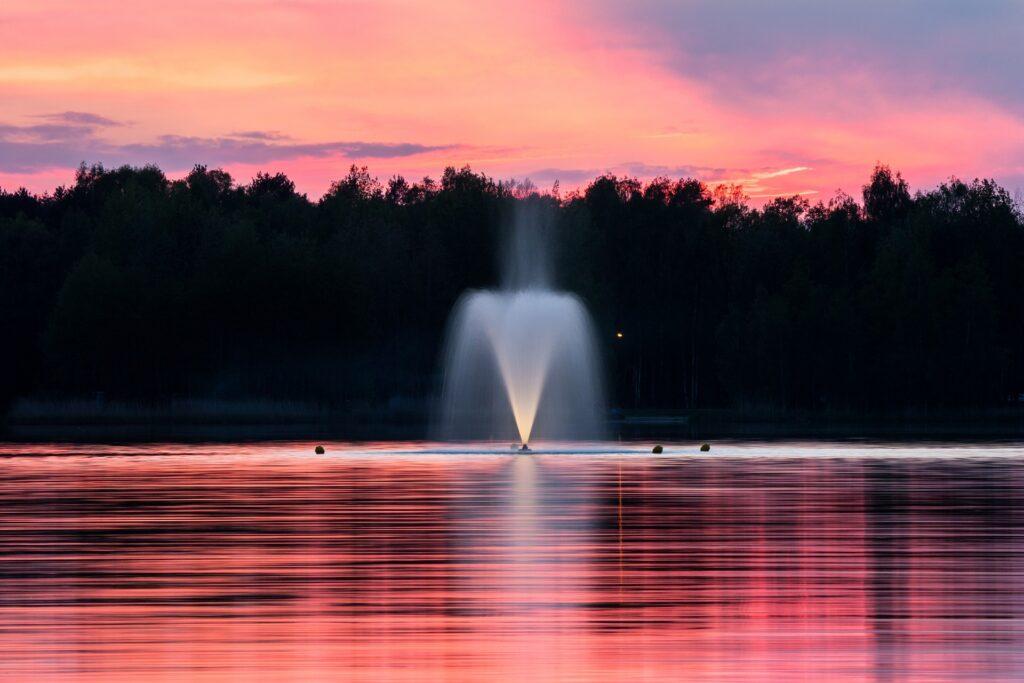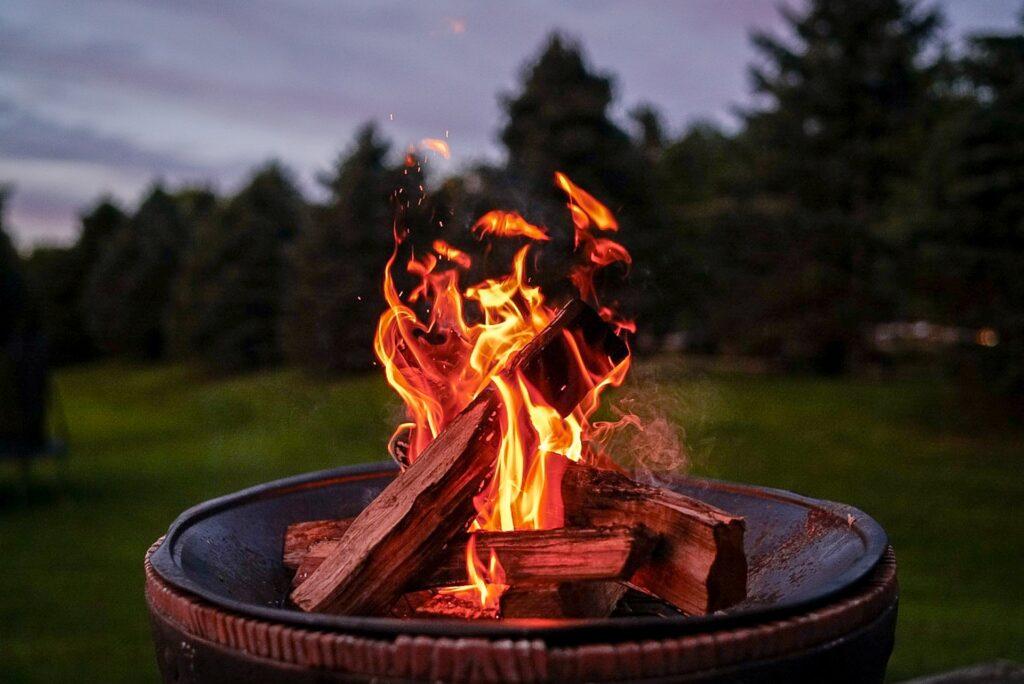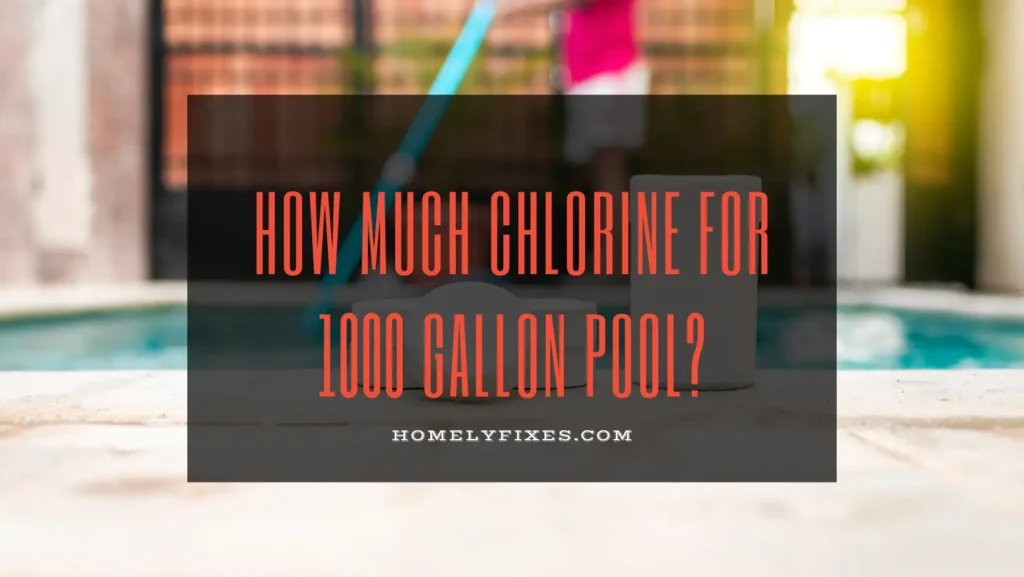
Chlorine is one of the most popular pool sanitizers on the market today. It is effective at killing bacteria and algae and is relatively affordable. But how much chlorine should you use for a 1000-gallon pool?
The answer to this question depends on a few factors, including chlorine levels in the pool, the pool water’s pH, and the water’s temperature.
In this article, I’ll discuss some of the best chlorine treatment practices for indoor and outdoor swimming pools, especially regarding how much Chlorine to add to a pool and how to add Chlorine to a pool safely.
Summary – If you have a 1000-gallon pool, you should add 3 ounces of liquid chlorine to your pool water. This should result in a chlorine concentration of about 3 ppm. However, Keep in mind that this is just a general guideline. Your pool may need more or less chlorine, depending on its unique circumstances.
How Much Chlorine Should You Add to Your Pool?
It’s important to add chlorine to your swimming pool when you clean or refill it to keep the water clear and healthy. For example, if you have a 1000-gallon above-ground pool, you’ll need to add approximately 3 ounces of liquid chlorine to bring the chlorine concentration to 3ppm.
However, aside from the amount of Chlorine required in a pool, there are other factors to consider when adding Chlorine to the pool, including how often to add Chlorine to your pool.
For instance, if you have a smaller family with an average-sized swimming pool, you would only need to add Chlorine once every week or two weeks. Whereas large-size pools with frequent users should be treated 2 to 3 times a week.
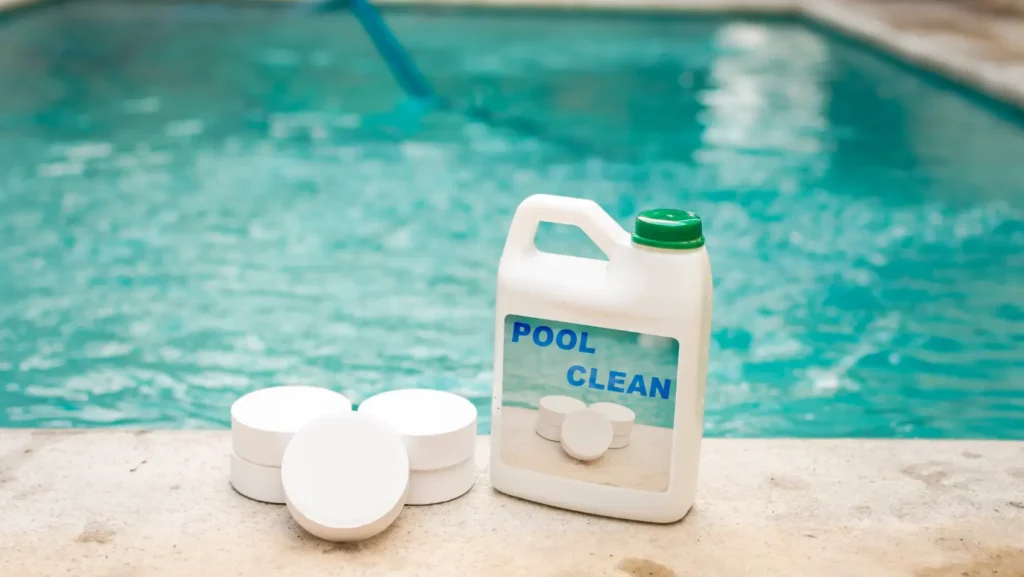
What Time Is Best to Apply Chlorine?
There is some debate over what time of day is best to apply chlorine to a pool. Some pool owners believe that it is best to do so in the morning, while others believe that evening is best. There are pros and cons to both times of the day.
Morning chlorination has the advantage of allowing chlorine to work all day long. This is especially important in hot weather when the sun can quickly evaporate chlorine from the pool.
Evening chlorination, on the other hand, allows the chlorine to work overnight when the pool is not being used. This can be beneficial in cooler weather when the pool is not being used as much.
Ultimately, we recommend adding chlorine in the evening after sunset. This prevents the chlorine from burning off quickly, making it more effective.
How to Apply Chlorine to Pool
Applying Chlorine to your pool is pretty simple and isn’t too different from other treatment chemicals.
- Start by testing the chlorine level in your pool.
- Dilute the Chlorine tablet in a bucket of clean water to form a liquid. Stir the water until the chemical is completely dissolved. You can do this as well if you are using powdered Chlorine.
- Slowly pour the required measure of Chlorine into the pool. And as recommended, 3 ounces of Chlorine per 1000 gallon pool.
- Add Chlorine to the pool’s perimeter to ensure it gets to every part.
- Wait at least 4 hours after adding Chlorine to the pool before using it.
How to Test the Chlorine Level of your Pool
To figure out how much chlorine your pool needs, the first step is to test the pH level of the water. Next, you’ll need a pool test strip, which you can pick up at any pool supply store or online.
- Once you have your meter, simply dip it into the water, making sure to draw water from the pool’s depth (at least 18 inches deep) to obtain an accurate reading.
- Allow the test tube to be half filled with water and wait about 5 to 10 seconds for it to change color.
- Then compare the tester’s color to the color chart on the kit manual to know the chlorine level of your pool.
A pool test strip can be used to check your pool’s chlorine level, pH level, and alkalinity. The test strips have different strengths, and you must choose the right one for your pool to get an accurate result.
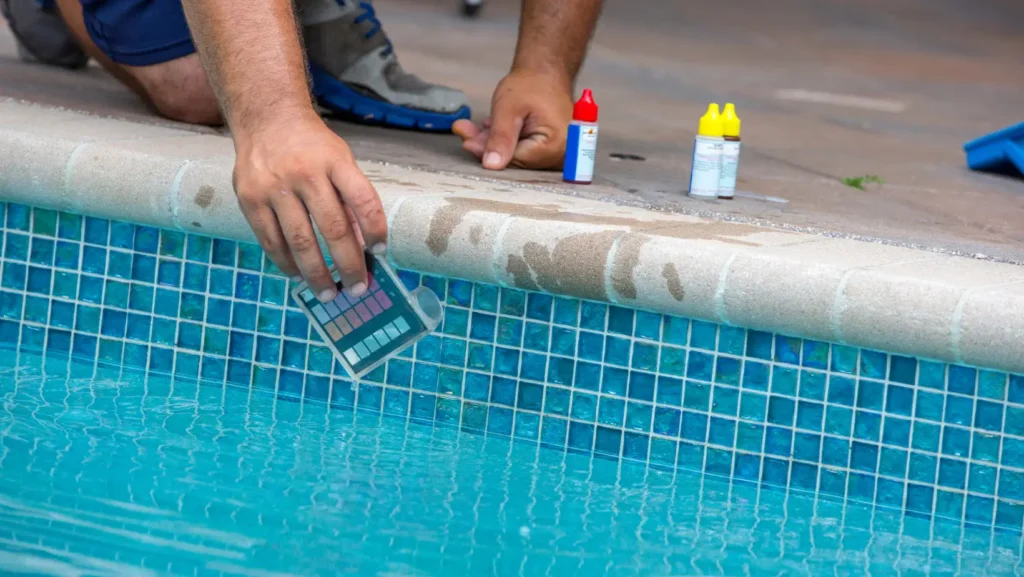
What is the Best Type of Chlorine for Your Pool?
The most popular type of chlorine is sodium dichlor, also known as trichlor. Most pools use this type of chlorine because it is the most affordable and works well in all types of water.
Sodium dichlor is most commonly found as granular pool shock, which comes in a plastic container or bag. You can add it straight into the pool or dissolve it in water before adding it to the pool.
The required amount of water is determined by the product concentration being used and the amount of Chlorine required for the size of your pool.
Can You Swim With Chlorine Tablets in the Pool?
We recommend waiting four hours after adding chlorine to the pool before swimming. This is because chlorine can cause your body to produce more nitrogen and CO2, leading to headaches, nausea, and even vomiting.
What Factors Affect How Long It Takes to Clear Your Pool?
The amount of time necessary for your pool to clear depends on several factors:
How Much Chlorine is Already in the Water
If your spa has a lot of minerals like calcium or magnesium, those minerals can reduce the effectiveness of Chlorine and make it difficult for it to do its job.
How Old the Pool is
Older pools may require more time than newer ones to clear out because they’re less likely to have pre-formed chemicals like calcium and magnesium that can bind with Chlorine.
How Frequently You use your Pool
If you use your spa often enough, you’ll need to add more Chlorine when it’s cloudy or dirty because these conditions increase the amount of dirt floating around in the spa (which binds with Chlorine).
Tips and Tricks for Keeping Your Pool in a Good Condition
Several variables can impact the state of your pool, but the following tips can help keep it in good shape:
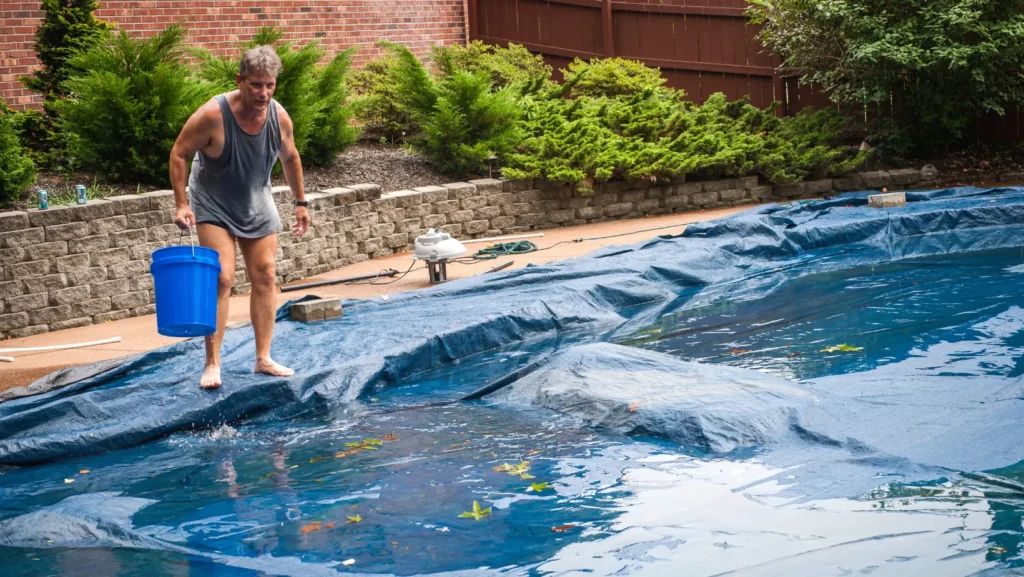
Get a Good Swimming Pool Cover
A good swimming pool cover helps to protect the water from debris and sunlight while preventing algae growth on its surface.
Keep Your Water Clean:
Bacterial growth is the main cause of pool problems. To keep it at bay, avoid spending too much time in the water without putting on sunscreen or using proper bathing suits when going into it.
Use a Chlorine Test Kit Regularly:
You should check the chlorine levels in your pool at least twice a week and more often if there is a lot of algae growth or a lot of dirt in the water. This will help ensure that your pool is properly circulated.
Keep the Filter Running Constantly
Install a new pump as soon as possible after installing your filter system to keep dirt out of the water. This will ensure that the pump works properly and removes debris from your pool.
Keep the pH level balanced:
Add acid or alkaline solution to adjust if necessary.
FAQs On How Much Chlorine For 1000 Gallon Pool
Can I Put Shock and Chlorine in the Pool at a Time?
You can shock your pool and add chlorine at the same time. However, make sure you use a high-quality shock designed for pools and follow the manufacturer’s directions on properly mixing the shock and chlorine. Also, always test your pool’s water before and after adding shock and chlorine to ensure the pH levels are balanced.
How Do I Increase or Reduce My Pool Chlorine Level?
Adding more water to your pool can reduce the chlorine content. Additionally, you can increase it by putting extra chlorine in the pool.
